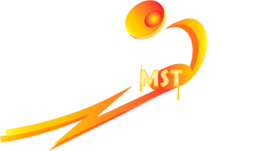I hope you are finding the topic of HRV as fascinating as I am! In part 1 of the series, I explained what HRV is and how it is linked to eye-hand coordination. In part 2, I presented a follow-up discussion on the relationship between HRV and my ability to bounce reaction balls. I also presented some information on red-light exposure as well as the potential impact of sleep on HRV.
So, what has become of my experiment of wearing the eye mask at night? Well, first off, let me say that I love it – and my sleep scores as captured by my fitness device seem to agree! My average sleep score as reported by my fitbit from 7/28 – 10/5, the period I collected data while sleeping without the mask, was 79.4. the period from 10/6 – 11/20 when I used the mask was 85! That is a 7% improvement in my sleep score I would take that as a win! I bet you are thinking my HRV must have soared as a result. Well… it actually dropped… from 39.1 to 36.9… a drop of 5.6%… What? I will address this shortly – but let’s just agree that using the mask is a really good thing!
During the month of October, I also tried another experiment. Elite athletes have been using HRV as a tool to tailor their workout schedules. It is believed that HRV is a good indicator of over-training as it can serve as a barometer as to when the body is under stress due to too much exercise. In fact, the fitbit app produces a daily “readiness” score based on recent activity level, recent sleep and HRV. Each day, the user gets a score as well as a recommended number of “zone minutes” of activity for that day. Here is an example of what the looks like on a day when fitbit says I can go for a day of moderate exercise:


And here is an example of when I am tapped out!


In the past, I would pretty much blow off the suggestions from fitbit and instead just determined my workout routine for the day based more on available time, the weather, and how I felt! I committed to follow the suggestions from fitbit for the entire month of October and see what the result was. I was moderately successful in following the fitbit prescriptions only having one day of “exercise indiscretion” in which I exceeded the recommended zone minutes by a significant amount. Once again, you are probably thinking it must have resulted in a positive change to my baseline HRV. Well… as in the case of the sleep experiment, this was not the case! Here are the stats comparing September during which I exercised without regard to my daily readiness score, and October in which I used the readiness guide to tailor my workouts to avoid “over-training”.
Month HRV readiness zone minutes
Sept 39.4 71.7 108.9
Oct. 38.1 71.1 118.9
As you can see, there was a very slight dip in my average HRV value (3.3%) when I was really trying to avoid over-training stress. Interestingly, my readiness dropped as well by less than a percent while my average daily zone minutes increased slightly by 9 percent. So, I was able to get more exercise minutes in without over-training – but did not see a corresponding bump in my baseline HRV rate.
Hmmm… it seems the harder I try to improve my HRV, the worse it gets! This was really puzzling… I thought I would check another data point. Surely there should be a link between my meditation practice and my HRV. I have written several posts about my experiences using the MUSE mediation system in which I wear an EEG headband that checks how calm I am during my meditation sessions.
Here is an example of a recent session in which I was very calm:

I wondered what the correlation would be between my daily mediation scores and my HRV. I compared the scores for the month of October and found that they were actually mildly negatively correlated – a value of -0.19 meaning that as my HRV increased, by calm score tended to decrease and vice-versa. This was certainly not what I would have expected.
What I have concluded from all of these trials? Well, I think October was just a bad month! No – not really… but I do think that we human beings are very wonderfully complicated beings – both in mind and body! There are so many factors that influence the interactions of our autonomic nervous systems. It is very difficult to see cause and effect by changing just one variable as other variables are constantly changing whether we want them to or not. As an example, you can do all of the proper things as I did to control sleep and exercise schedules, but if you are facing some tough deadlines at work, or a stressful personal issue, all of the good might go out the window when you measure your resulting HRV. One could even argue that your HRV might have even dropped more had you not done all of the “right things”! Who knows, maybe even worrying about HRV might just be enough to make it go down!
So, what is next for my HRV rabbit-hole dive? Well, in less than two weeks, I will attend the first international HRV conference. I am hoping to take advantage of that opportunity to learn the latest on this fascinating topic. In the meantime, I will continue to try to make life style choices that should positively impact HRV. I will report back soon!
